Ma'amoul cookies feature a buttery crisp cookie primarily made of farina. The cookies can either be stuffed with sweet spiced dates, walnuts, or pistachios. These cookies are somewhat similar to shortbread. Ka'ek is commonly known in Palestine as the one stuffed with dates, and ma'amoul on the other hand is stuffed with nuts, either walnuts or pistachios.
Palestinian Christian mothers work earlier in the week, the week that precedes Easter Sunday - the Holy Week- to prepare Easter cookies so they can be ready on Easter day.
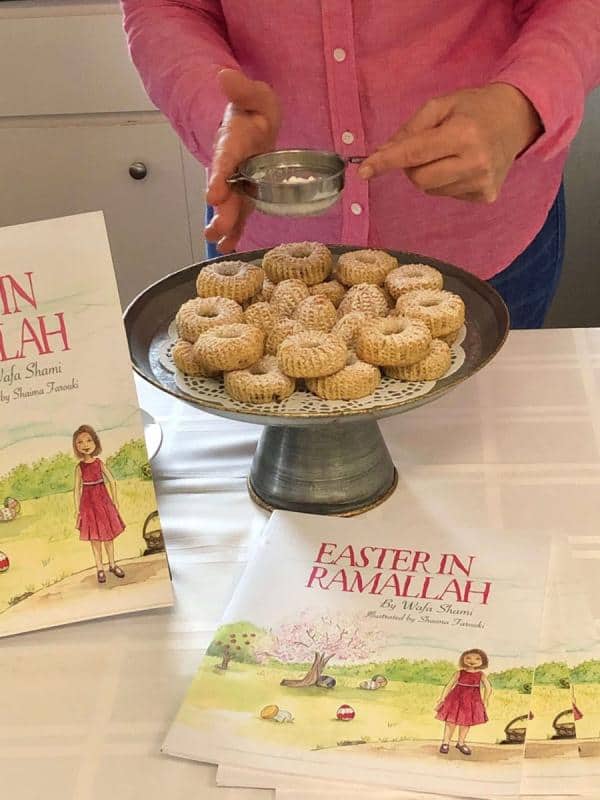
Making these cookies can be time-consuming not just because of the process of making and decorating them but also due to the large quantities everyone makes. So the cookies can be share with friends and family during the exchange visits that take place on Easter Sunday. Yes, that’s how things usually are in Palestine, and that is the excitement of the holiday.
Neighbors and families gather to support and help one another in making the ka’ek and maamoul. As kids and teenagers, we would gather around our mothers sitting around a big table. While they are rolling ka'ek and doming maamoul we are in charge of decorating. A term called na’esh in Arabic, using a small pincher or a clip a special tool to decorate the cookies. As part of the fun, we use to compete with one another on who is best with their decorating skills.
Book
Exciting memories of an atmosphere filled with love, laughter, and the holiday spirit. As a child, I was very fond of this holiday and of that particular time of the year which inspired me to write a children's storybook titled Easter in Ramallah. Feel free to check it out and share it with your kids around Easter.
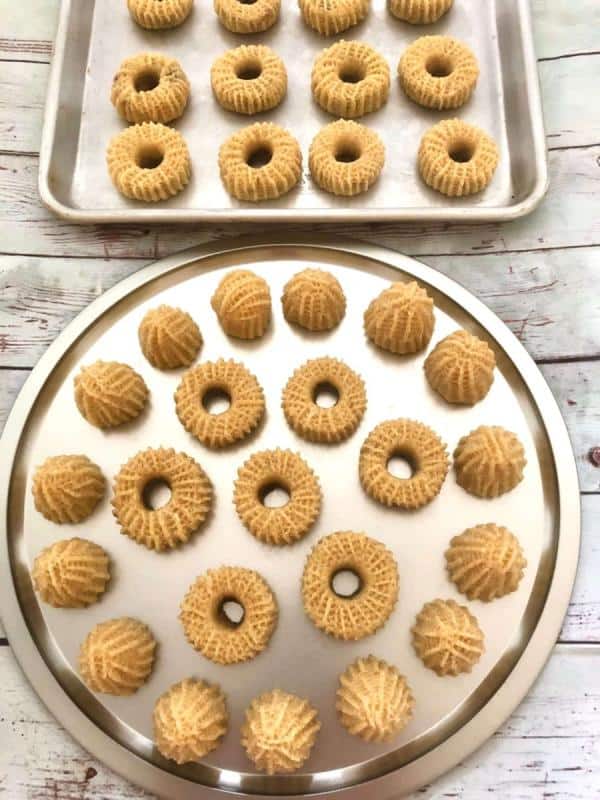
So I think there is a sort of miss naming for ka’ek and maamoul. People often mix the names, or at least that’s how we call it. Ka'ek is the round-shaped cookie stuffed with dates. Maamoul is the one that looks more like a dome and is stuffed with either walnuts or pistachios.
For Palestinian Christians these cookies symbolize Easter, ka’ek is considered a symbol of the crown that was placed on Jesus’s head during the crucifixion, and maamaoul symbolizes the sponge that was filled with water and squeezed over his face. when he asked for water. For Palestinian Muslims, ka’ek and maamoul are also popular and they make them during their holidays Eid El-Adha and El-Fiter.
How to make Easter cookies:

Start by preparing farina with butter at least 24 hours or the night before. (Just to clarify about the name Farina some call it semolina but note that semolina is finer than Farina, some often mistake the names). So mix farina with good quality butter or ghee. Start by melting the butter and letting it cool off to room temperature before mixing it with farina. Make sure the butter is cooled off otherwise if poured hot it will crumble and it’ll be hard to work with.

Before pouring the butter add a pinch of mastic and mahlab and one tablespoon of sugar. Mastic and mahlab are used with many Arabic desserts, they give great aroma and flavor, just a tiny bit of both should be enough, make sure to grind them into powder before using. With your hands mix well integrating farina and butter. It's going to look dry but that’s how it is. Cover and let sit at least overnight. It can be kept for 2-3 nights prior to using it.
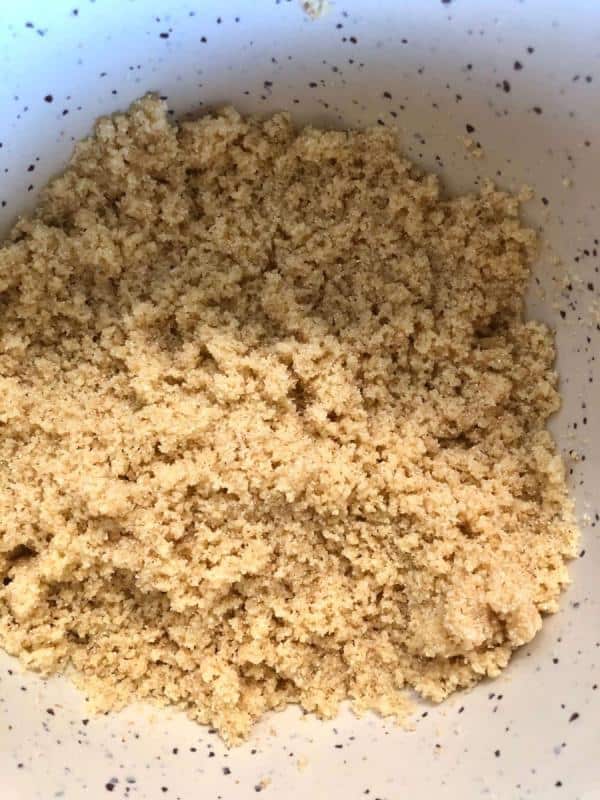
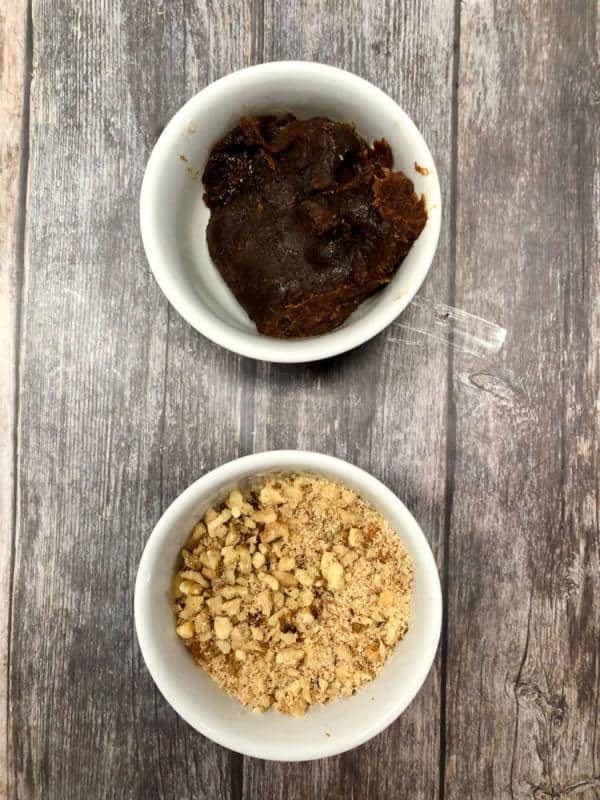
Mastic or Arabic gum: is a resin obtained from the mastic tree and looks like small golden rocks.
Mahlab spice: is an aromatic spice made from the seeds of a species of cherry, mainly used for desserts.
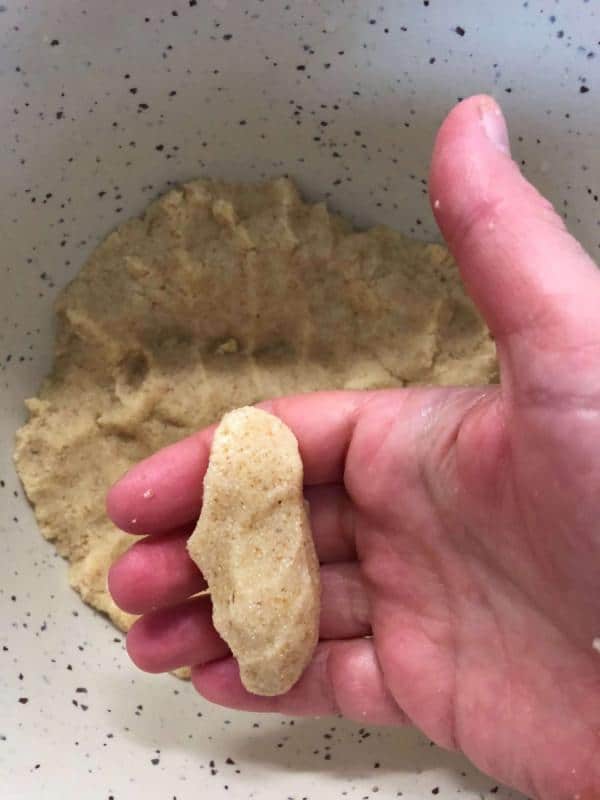
Once getting ready to make the dough, the mix may look a bit hard, but no worries break it with your hands until it feels all smooth. Set ½ a cup of warm water aside, take half of that water and add one teaspoon of instant yeast with 1 teaspoon of sugar, mix well and pour over farina and butter, start kneading, and gradually add the rest of the water while continuing to knead until you get a doughy mix that you can work with.
Shaping

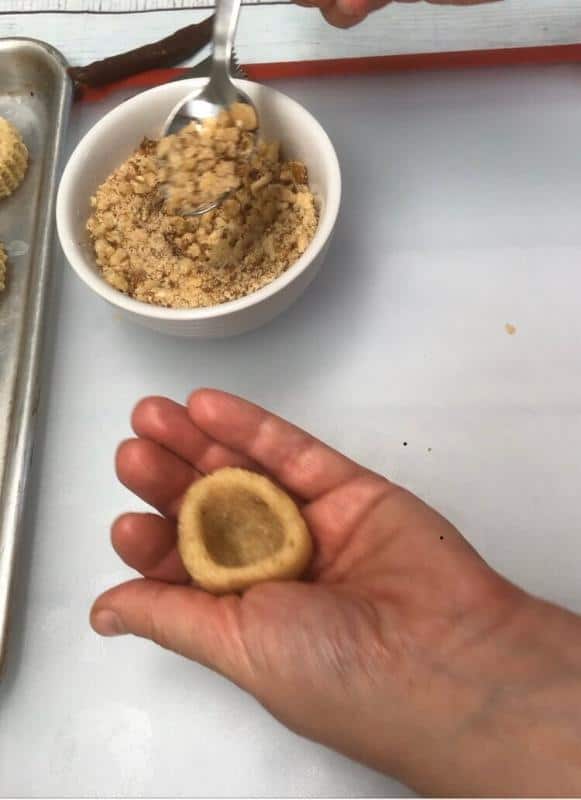
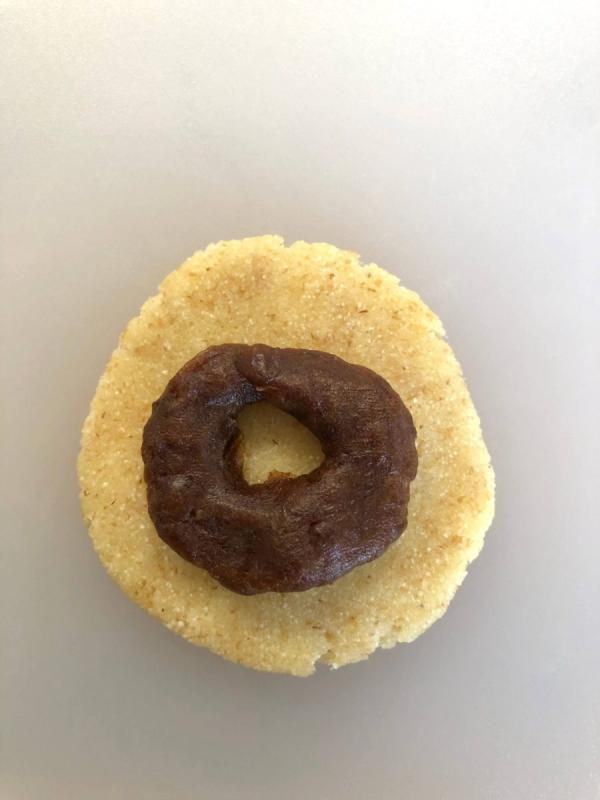
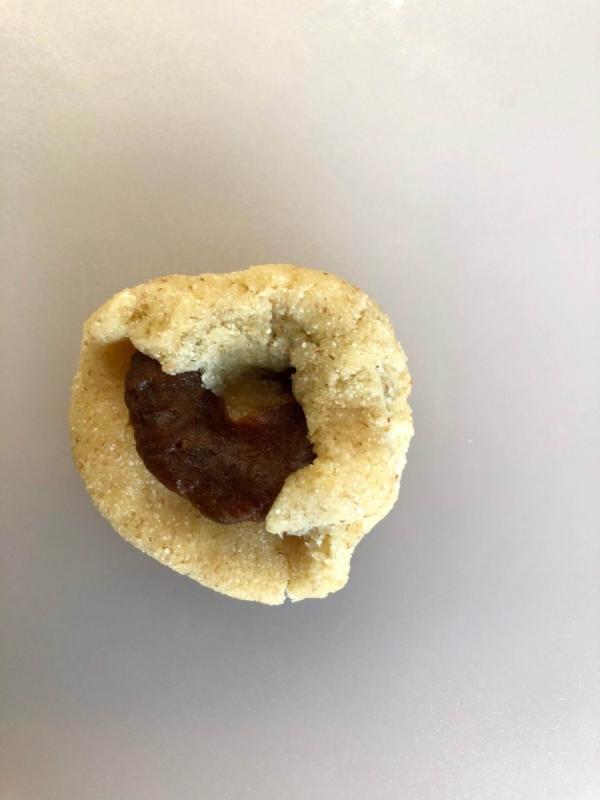
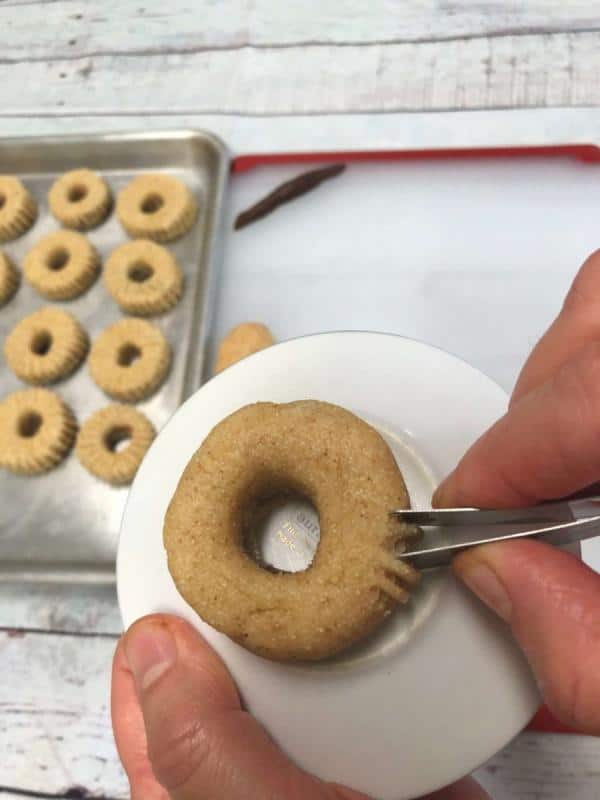
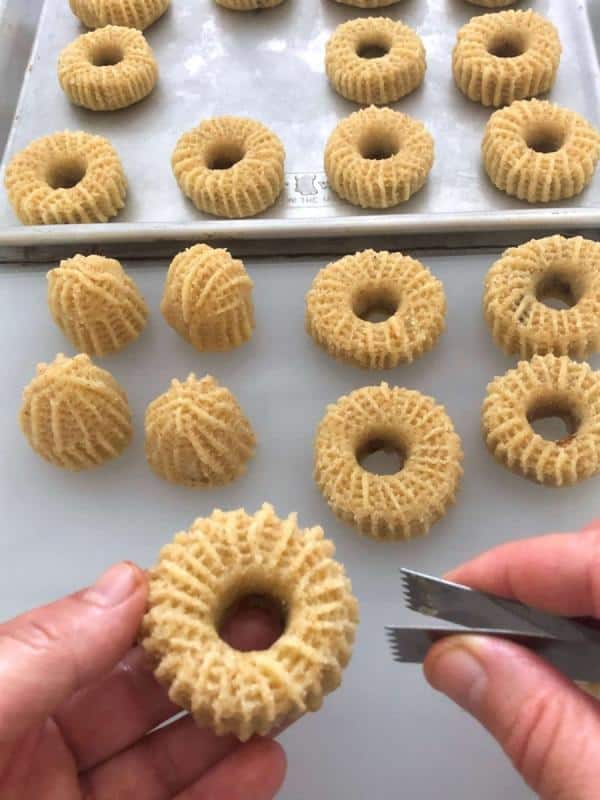
Meanwhile, prepare the stuffing, the dates for the ka'ek and walnuts for maamoul. Use dates paste which can found at any Arabic store especially used for baking cookies, add 1 tablespoon of olive oil or melted butter to the dates (the oil over the date paste makes it easier to work with and won't get sticky on your hands, it's good to rub your hands with olive oil while rolling the dates) ¼ spoon of cinnamon and a pinch of nutmeg.
Mix well and roll into long logs so it's prepared and easier to work with. As for the walnuts chop finely and add sugar, cinnamon, and nutmeg, mix well and set aside.
Now ready to start working with the dough, let’s start with ka’ek, which is the rounded shape stuffed with dates. With your hands take a small piece of the dough and flatten it into a circle shape, then take a small piece of the dates, roll and round into a circle that is smaller than the dough circle so it fits in the middle, then cover the dough around the dates maintaining the round shape, rolling it around with both hands.
Then use your index finger to open the hole in the middle, place on a baking sheet (no need to grease the baking tray since the dough has enough butter). Continue with the same steps until all dates are done. Once all ka’ek is done, decorate with the pincher.
Maamoul
The other half of the dough is for maamoul, take a small piece of the dough and with your index finger make a hole in the dough and try to curve it in more like a dome, with a small spoon take some of the walnuts stuffing and place inside the dough, cover the top and keep shaping it aiming for a dome shape. Continue until the rest of the dough is used. Decorate with the clip.
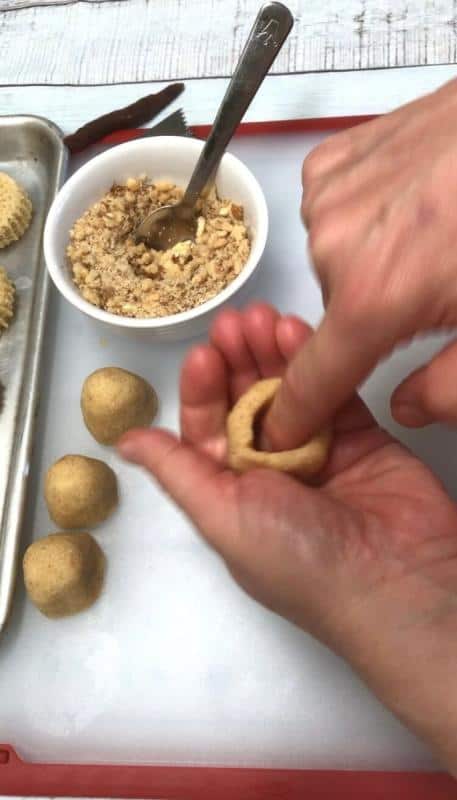

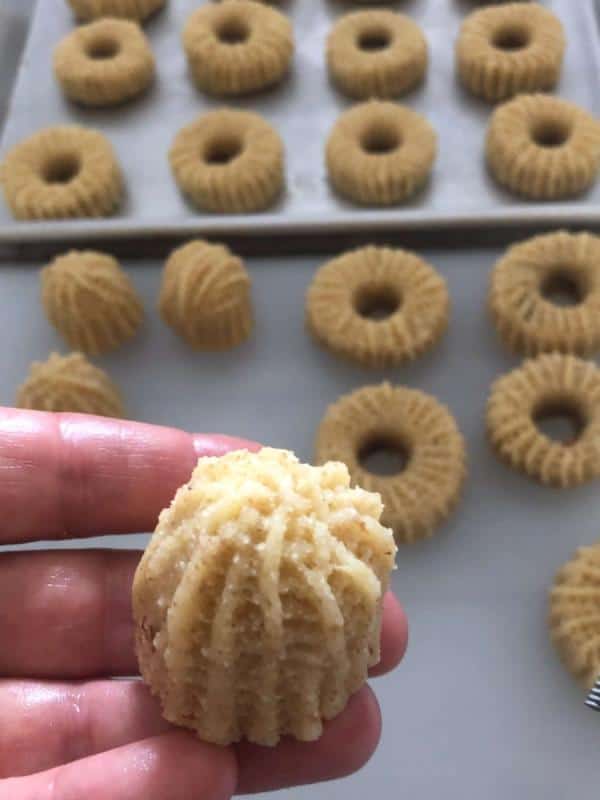
Once all is done, set the baking tray aside and let it rest for at least an hour before baking.
Warm the stove to 450 degrees F, and bake for about 10-12 minutes or until the bottom is golden brown. Keep an eye while baking to make sure they’re not over-baked otherwise they’ll get hard and dry. Depending on your stove, but if the top still looks pale after baking, place under the broiler for just 2-3 minutes aiming for a slight golden color.

Once cooled off store in an airtight container, they can last up to 10 days. Or in the freezer, they last up to 3 months. Sprinkle with powdered sugar upon serving.
This makes 22 small pieces of ka'ek and 16 pieces of maamoul.

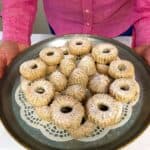
Ma'amoul Middle Eastern Date Filled Cookies
Description
Ma'amoul cookies feature a buttery crisp cookie primarily made of farina. The cookies can either be stuffed with sweet spiced dates, walnuts, or pistachios. These cookies are somewhat similar to shortbread.
Ingredients
Dough:
- 3 cups farina
- 1 tablespoon sugar
- ¼ teaspoon of mastic gum (grind)
- ¼ teaspoon of mahlab spice (grind)
- 1 cup of melted butter or ghee
- 1 teaspoon instant yeast + 1 teaspoon of sugar
- ½ cup of warm water
Dates paste stuffing:
- 4 ounces of dates paste
- 1 tablespoon of olive oil or melted butter
- ¼ teaspoon of cinnamon powder
- A pinch of nutmeg powder
Walnuts stuffing:
- 3 ounces of walnuts chopped
- 1 teaspoon of sugar
- ¼ teaspoon of cinnamon powder
- A pinch of nutmeg powder
Instructions
-
Add mastic, mahlab powder and 1 tablespoon of sugar over farina mix well, then add melted cooled off butter.
-
Mix all ingredients well with butter and keep overnight.
-
Prepare the dough, set ½ a cup of warm water aside, take half of that water and mix with one teaspoon of instant yeast with 1 teaspoon of sugar, mix well and pour over farina and butter, start kneading, and gradually add the rest of the water while continuing to knead until you get a doughy mix that you can work with.
-
Meanwhile, prepare dates for stuffing. Use dates paste, add 1 tablespoon of olive oil, ¼ spoon of cinnamon and a pinch of nutmeg. Mix well and roll into long logs and set aside.
-
As for the walnuts chop finely, add sugar, cinnamon, and nutmeg, mix well and set aside.
-
To start working with the dough, let’s start with ka’ek, which is the rounded shape and stuffed with dates. With your hands take a small piece of the dough and flatten it in a circle shape, then take a small piece of the dates, roll and round into a circle that is smaller than the dough circle so it fits in the middle, then cover the dough around the dates maintaining the round shape, rolling it around with both hands, then use your index finger to open the hole in the middle, then place on a baking sheet (no need to grease the baking sheet since the dough has enough butter). Continue with the same steps until all dates are done. Once ka’ek is done decorate with the clip.
-
The other half of the dough is for maamoul, take a small piece of the dough and with your index finger make a hole in the dough and try to curve it more like a dome, with a small spoon take some of the walnuts stuffing and place inside the dough, cover the top and keep shaping it aiming for a dome shape. Continue until the rest of the dough is done. Decorate with the clip.
-
Once all done, set the baking tray aside and let it rest for at least an hour before baking.
-
Warm the stove on 450 degrees F, and bake for about 10-12 minutes or until the bottom is golden brown.
-
You can place under the broiler for just 2-3 minutes aiming for a slight golden color if the top color is pale.
-
Once cooled off store in an airtight container, they can last up to 10 days. Or in the freezer, they last up to 3 months.
-
Sprinkle with powdered sugar upon serving.
Notes
This recipe makes 22 small pieces of ka’ek and 16 pieces of mamoul

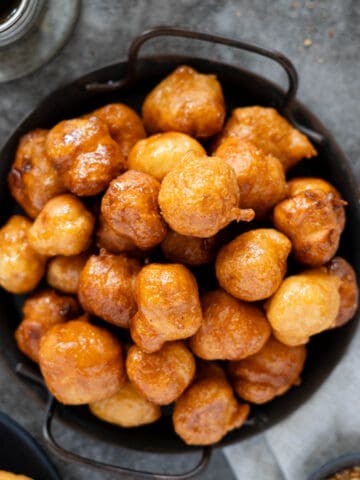

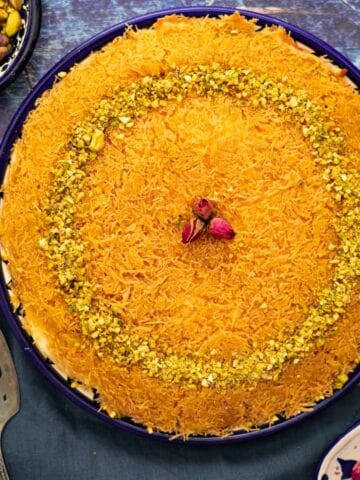
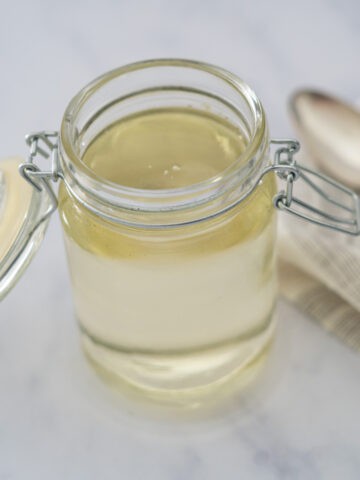
Randa says
Fantastic
Wafa Shami says
Thank you Randa!
JJ says
These cookies are not only beautiful, but delicious.
JJ says
These cookies are not only beautiful, but so good to eat!